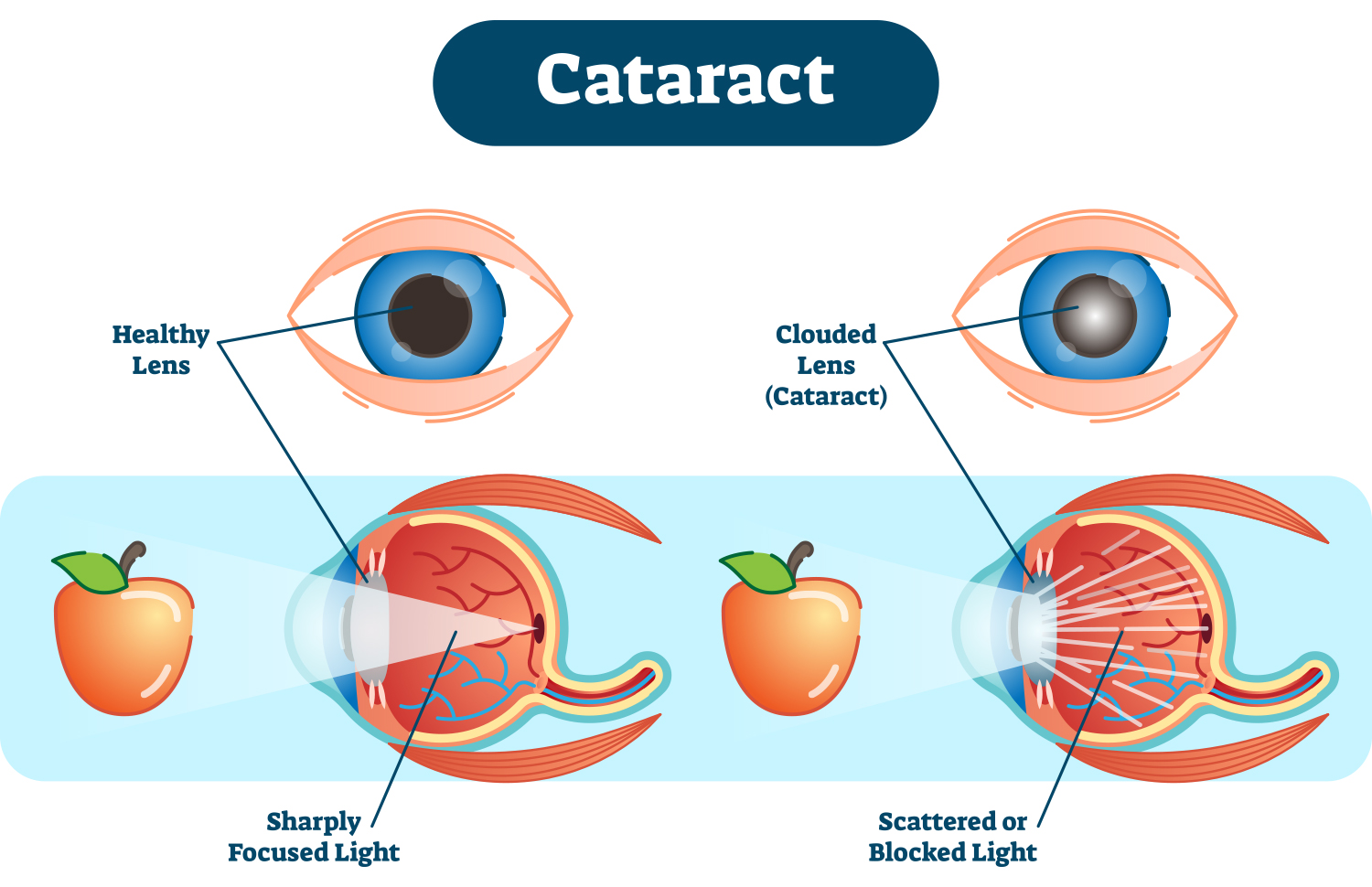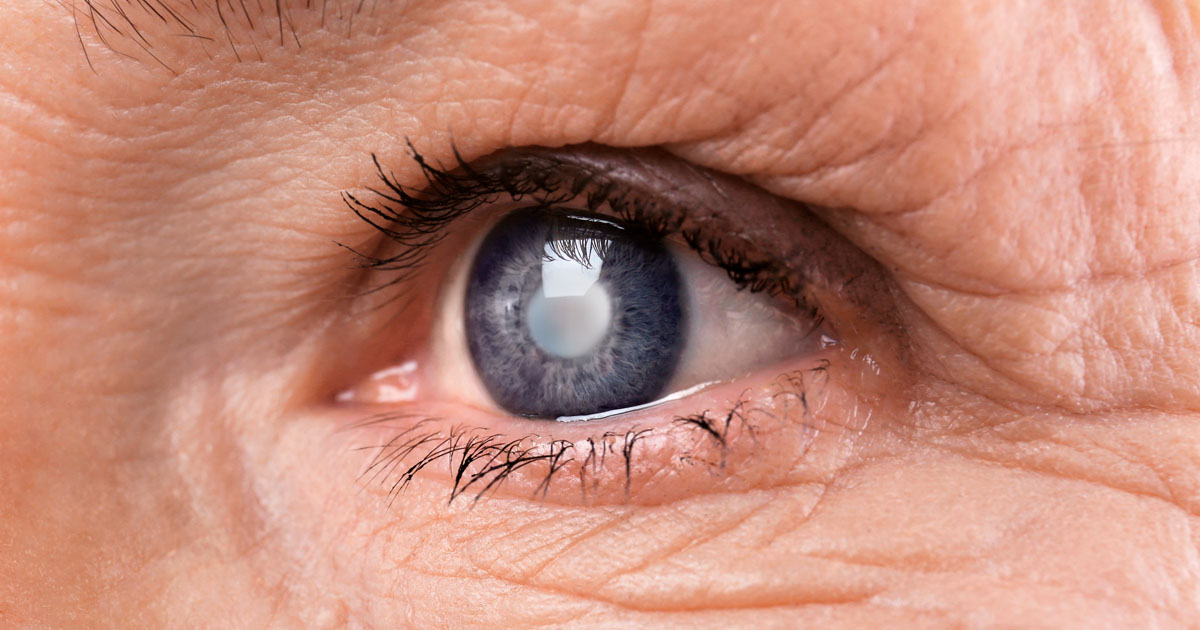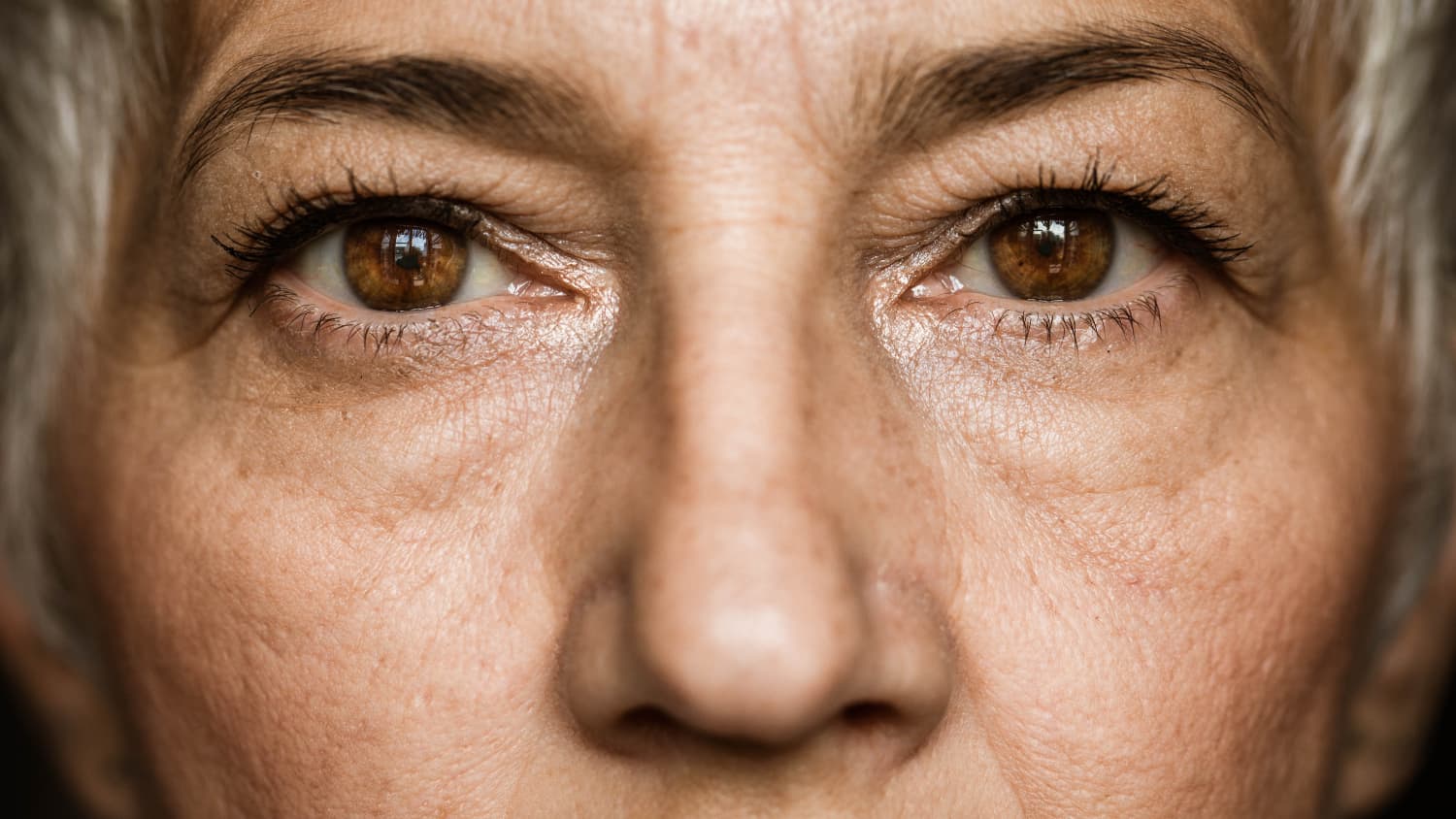A cataract is a clouding of the lens of the eye that usually develops gradually and can affect one or both eyes, greatly affecting a person's vision. This condition is one of the leading causes of vision loss worldwide, especially in old age. Cataract formation is associated with many factors, including age, genetics, exposure to ultraviolet rays, certain diseases (such as diabetes), smoking, alcohol consumption, and even long-term use of certain medications such as corticosteroids.
The lens is a clear structure inside the eye whose main function is to focus incoming light onto the retina to create a clear image. Cataracts cloud this structure, causing light to no longer pass through the lens as efficiently, leading to vision loss. In the early stages, cataracts can cause minor changes in vision, such as color fading, double vision in one eye, reduced vision in the dark, decreased visual acuity, and increased sensitivity to light, especially when driving at night.
Cataract progression is individual, and its development can last from several months to several decades. It is important to emphasize that early diagnosis and appropriate care can help reduce visual impairment and improve quality of life. Modern cataract surgery is the most effective treatment in which the damaged lens is removed and, usually, replaced with an artificial implant called an intraocular lens (IOL) that restores clear vision.
Symptoms to look out for
Cataract is a clouding of the lens of the eye, which can have various symptoms that people should pay attention to, as these can be the first signs of the disease. Although cataracts usually develop gradually, they can take many forms and degrees of symptom intensity. It is important to understand these symptoms because early detection and proper treatment can help prevent more serious vision problems. Here are some of the main symptoms of cataracts:
- Decreased visual acuity: This may be the first symptom. A decrease in visual acuity can mean that objects appear blurry or hazy when they were previously seen clearly.
- Color distortion: Cataracts can cause changes in the color image, such as colors appearing duller or less vivid than usual.
- Double vision: A common symptom that can be noticed especially when a person is looking at a single object. This may be related to the deformation of the lens or its uneven turbidity.
- Hypersensitivity to light: Cataracts can cause sensitivity to light, which may manifest as increased discomfort or a desire to avoid bright light.
- Difficulty seeing in the dark: Many people find that cataracts make it harder to see in the dark or at night. This can manifest as fainter objects or difficulty recognizing moving objects.
- Difference in visual acuity between the two eyes: If a cataract develops in only one eye, there may be a difference in visual acuity or clarity between the two eyes.
It is important to emphasize that these symptoms may vary depending on the type of cataract and its stage of development. It's also important to remember that symptoms can gradually get worse and that even a small change in vision can be a sign of cataracts. Therefore, if you notice any changes in your vision, it is important to see an ophthalmologist who will be able to perform a thorough examination and determine the correct diagnosis and treatment plan. Early diagnosis and treatment are essential to prevent the more serious consequences of vision loss that cataracts can cause.

What are the causes and risk factors of cataracts?
Cataract is a complex condition characterized by cloudiness of the lens. This can be due to a variety of reasons, from natural aging to exposure to certain diseases or environmental factors.
One of the main factors in the development of cataracts is age. As mentioned earlier, aging is the most important factor because with age, the proteins in the lens can begin to wear down and break down, resulting in cloudiness. These forms of aging cataracts are called senile or age-related cataracts.
In addition to age, genetics also play a role. Having a family history of cataracts increases the chance that other family members may also develop the disease. This suggests that genetics may be a factor influencing the protein structure of the lens and its susceptibility to the aging process.
UV rays can increase the risk of cataracts. Prolonged exposure to sunlight on eye tissue can cause tissue damage and clouding of the lens. For this reason, it is very important to wear suitable safety glasses when exposed to strong sunlight.
It is also important to mention the influence of chronic diseases, such as diabetes or high blood pressure, on the development of cataracts. Both of these diseases can affect blood flow in the eye and cause tissue changes that can increase the risk of cataracts.
Smoking and heavy alcohol consumption are also associated with a higher risk of cataracts. Smoking is a known contributing factor to changes and cloudiness of the lens, so not only does it increase the risk of cataracts, it can also accelerate its development.
Eye injuries can also be a factor in the development of cataracts. Even if the injuries seem minor, they can cause damage to the tissues of the eye and contribute to the appearance of cloudiness of the lens.
Exposure to certain medications, especially long-term use of corticosteroids, can also increase the risk of cataracts. These drugs can change the chemical structure of tissues and contribute to changes in the lens.
After all, many people with cataracts have several risk factors that affect the condition of their eyes. It is important to know these factors and be aware of them for prevention and proper treatment. These include regular eye exams, a healthy lifestyle, and adequate sun protection.

How can the risk of cataracts be reduced?
Although aging and genetics are uncontrollable factors that contribute to the development of cataracts, there are certain tips and lifestyle changes that can help reduce the risk of developing cataracts. These tips include:
Wear safety glasses
Protection from UV rays is very important to reduce the risk of cataracts. The right choice of safety glasses can help protect your eyes from excessive sun exposure. It is important to choose glasses that filter at least 99% of UVB and UVA rays.
A healthy diet
Diet can have a big impact on eye health. A diet rich in antioxidants such as vitamins C and E and lycopene and lutein may help reduce the risk of cataracts. These foods can include red or orange fruits and vegetables, as well as leafy greens such as spinach and broccoli.
Consume omega-3 fatty acids
Research shows that omega-3 fatty acids can have a positive effect on eye health. These fatty acids can be found in fish such as salmon, tuna, and cod, as well as in flaxseeds and nuts.
Lead a healthy lifestyle
A healthy lifestyle, including regular exercise, weight control and avoiding smoking, can also help reduce the risk of cataracts. Physical activity and a healthy diet can improve overall health and circulation, including to the tissues of the eye.
Check with an ophthalmologist regularly
Regular eye exams are an essential part of cataract prevention. A professional ophthalmologist can perform a comprehensive eye examination and identify early signs of cataracts, thus helping to take preventive or treatment measures in time.
Avoid excessive alcohol consumption
Excessive alcohol consumption may be associated with an increased risk of cataracts, so it is important to avoid excessive alcohol consumption.
Protect eyes from injuries
Injuries to the eye can increase the risk of cataracts, so it's important to wear safety glasses in risky situations, such as playing sports or working with dangerous tools.
Manage chronic diseases
If you have chronic conditions such as diabetes or high blood pressure, it is important to monitor them regularly and follow your doctor's recommendations. This will help reduce the risk of complications from these diseases, including cataracts.
Understanding and following these tips can help reduce the risk of cataracts and keep your eyes healthy for the long term. It is important to emphasize that although cataracts usually develop with age, prevention and healthy lifestyle choices can play a role in the development and progression of cataracts.

Information sources
- National Eye Institute (NEI)
- American Academy of Ophthalmology (AAO)
- World Health Organization (WHO)
# katarakta







